Early morning is a great time to walk the Savanna and observe regeneration. Sometimes it's best to view natural areas as a whole if we're working on our understanding of ecosystems. Other times it's nice to take a stroll and visit favorite trees and appreciate them.
Along the river the silver maples grow massive and multi-trunked. Shooting up from a single seed, they hold the biomass of many single-trunked trees. Unless you plan on a future timber harvest, or the tree in question is near your house, there's no reason to cut off the extra stems when trees are young. Trees grow in a way that best takes advantage of available resources. Another way to express this idea is that trees know exactly how to grow and function in the ecosystem without human interference.
It's exciting to recognize a previously unknown tree on the property. Such is the case with hackberry. The tree below is obviously several years old, but I passed by it for years thinking it was an alien elm. It has graciously volunteered to help keep the driveway from “going to Kentucky” by which we mean washing away downstream.
Now that I recognize this tree, it has suddenly appeared everywhere. I love the graceful, umbrella-like form and have transplanted one to the front yard in preparation for the day when our existing shade trees die. The mystery of the source of these saplings was solved when one morning my car refused to start and I biked to work. There alongside the road not a half mile from the house rose a massive hackberry, previously unnoticed as I whizzed by in my car.
Tulip poplars, or as they are also known, tulip trees, are marvelous pioneers and also respectable members of a climax forest community. Along with black cherry, they are colonizing sections of the Savanna, but will remain as long-term residents long after the blackberries, goldenrod, multiflora rose, and bush honeysuckles have been driven out by shade. Young specimens are easily identified by their distinctive bark.
Tulip poplars are randomly spaced while black cherries favor groves and grow in small family groups here and there.
I've just about given up on photographing pawpaws. When entering one of the many patches I'm continually awed by how they grow under larger trees, but strategically place their leaves in exactly the right spots to catch the sun. Their tropical looking foliage creates a magical space that is simultaneously bright and open, and shady and cool.
Trying to capture this phenomenon in a photo has resulted in many failures as the leaves usually fade into the green background and appear nondescript. The above picture is the best of today's attempts.
My homage to favorite trees would not be complete without Ohio buckeye. The small specimen above appeared along the driveway on the margin of the wetland. A larger one grows beyond it in a lower and much wetter spot, while others share space with box elders and silver maples closer to the river. I've left out some favorites: sycamore, sweet gum, basswood, hickory, and of course red and chestnut oak. Expect more tributes in the future.



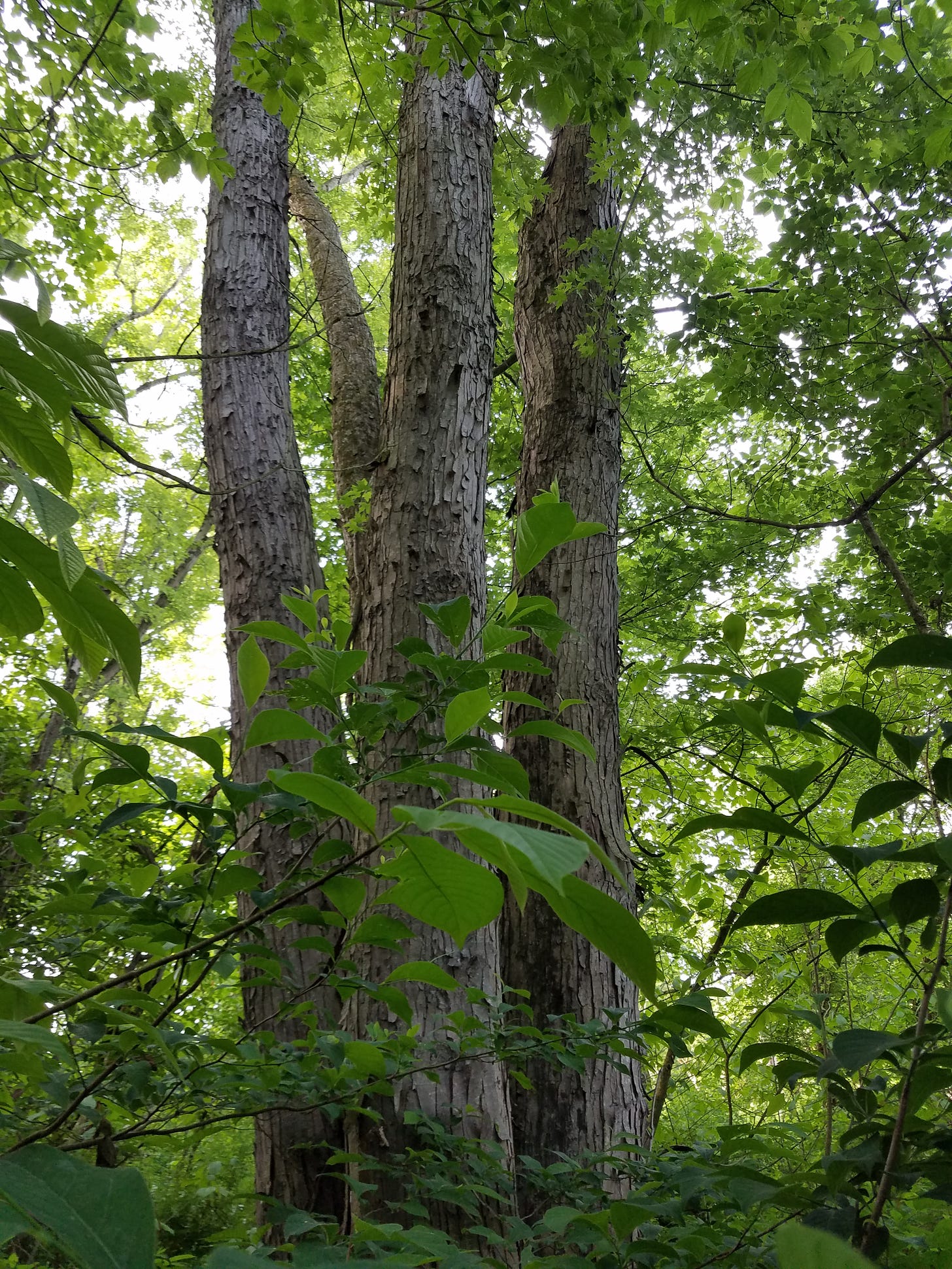
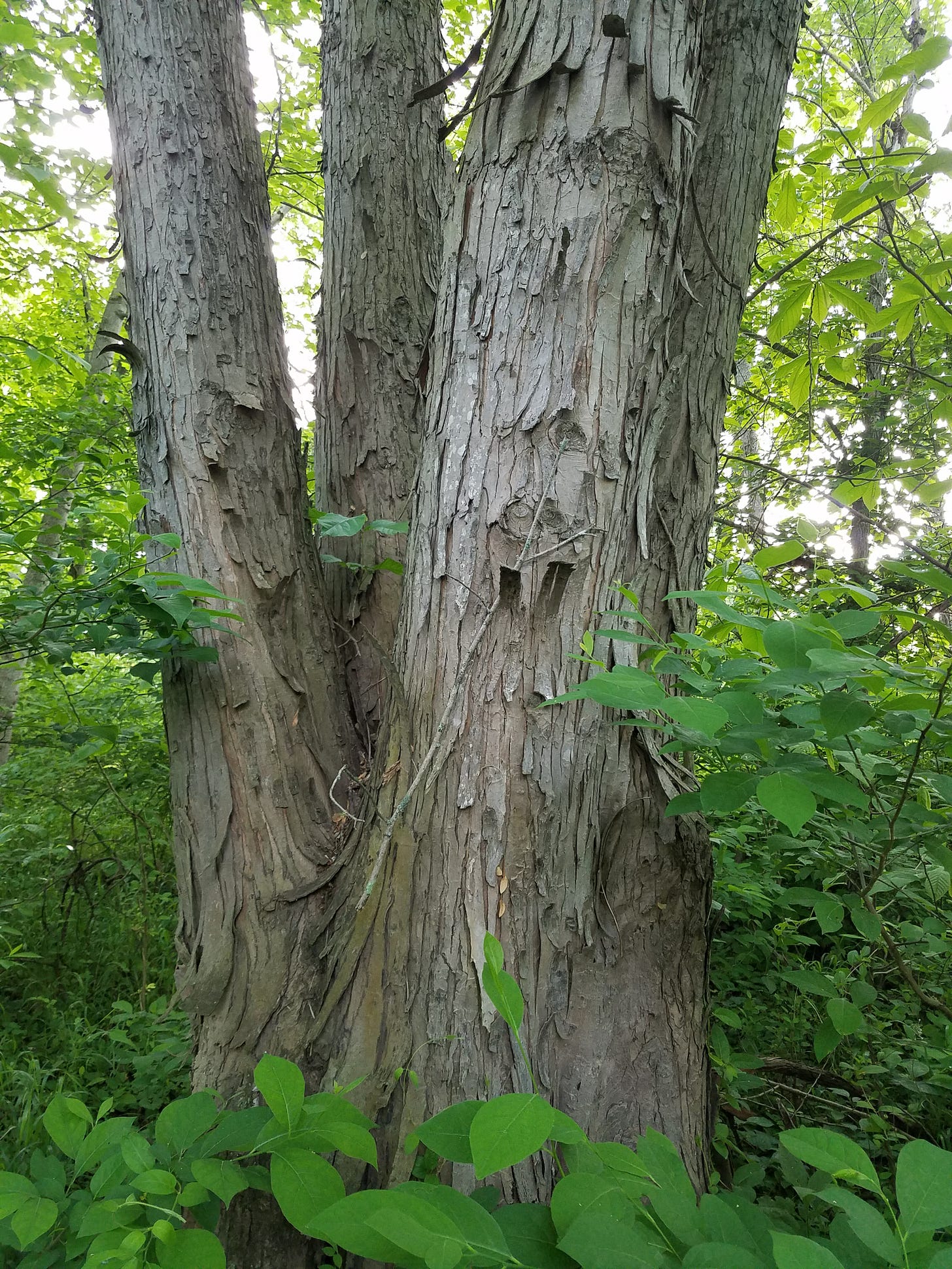
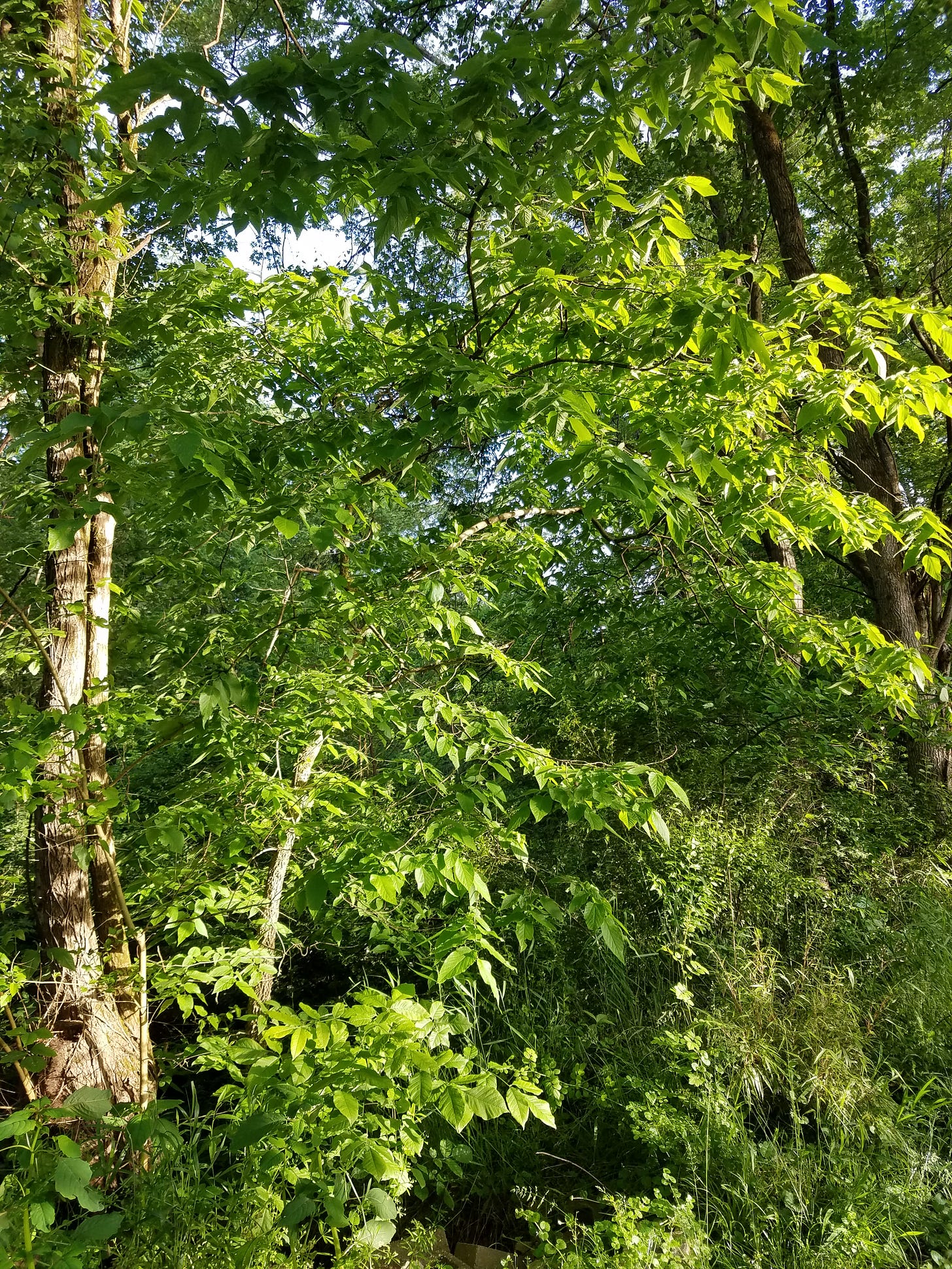

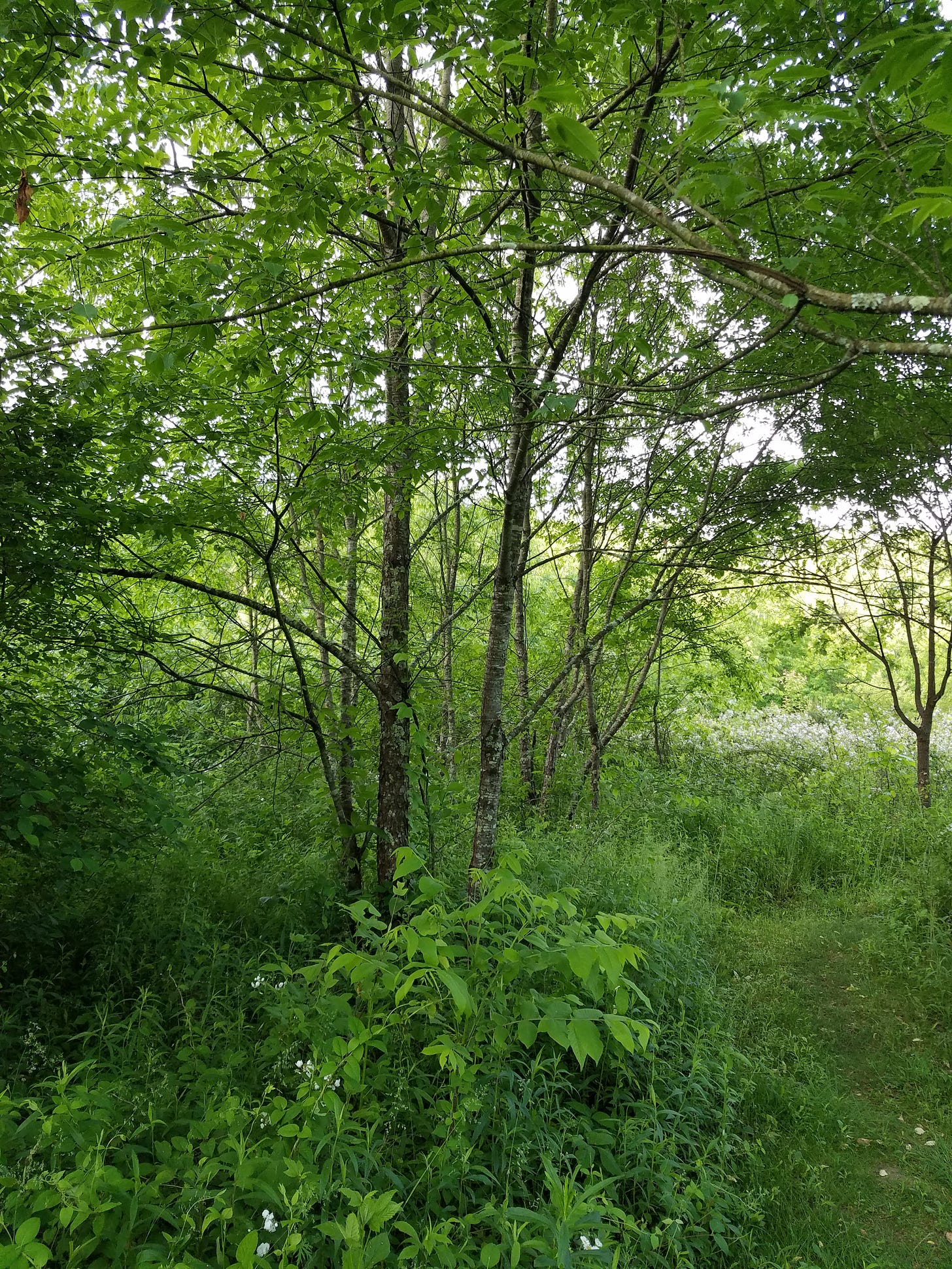
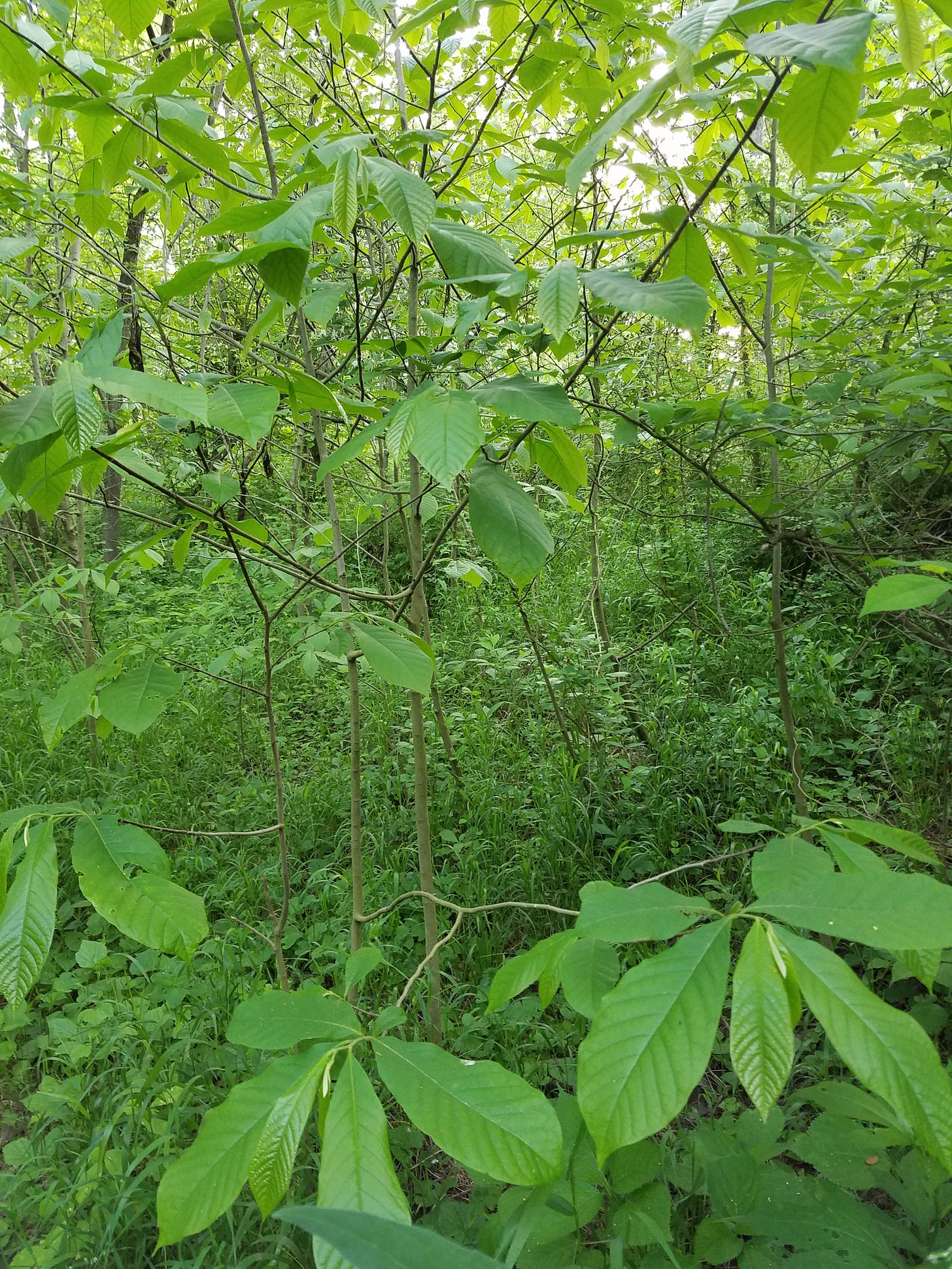


So Lush! THIS is what I miss here in the desert SW. Thank you for sharing. ❤️
So, if I have a young tree with branches right at the bottom, I don’t need to cut those branches off? Am I reading that right Lynn?